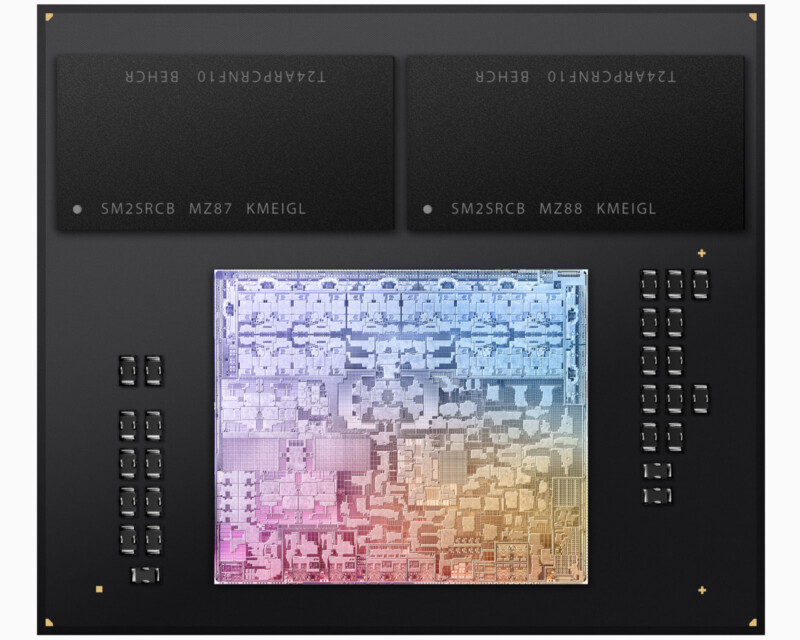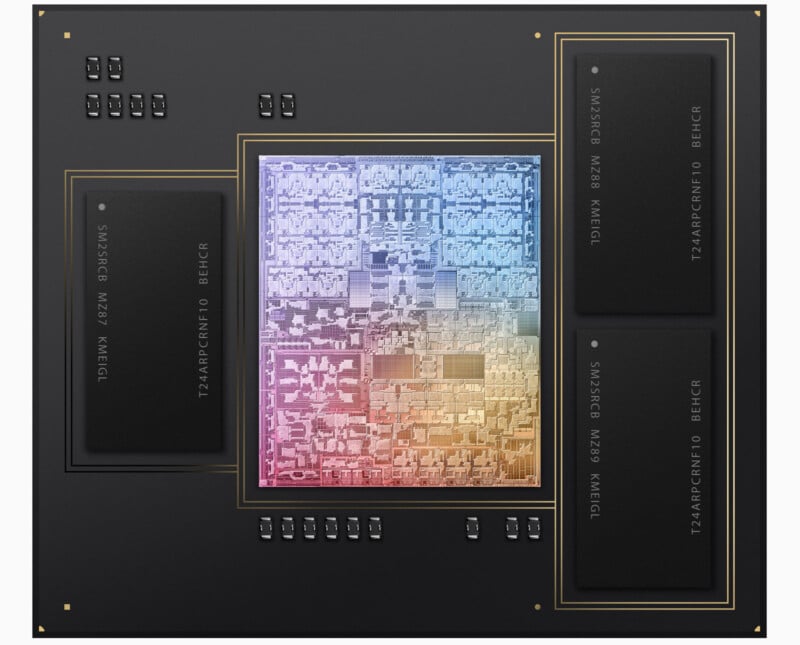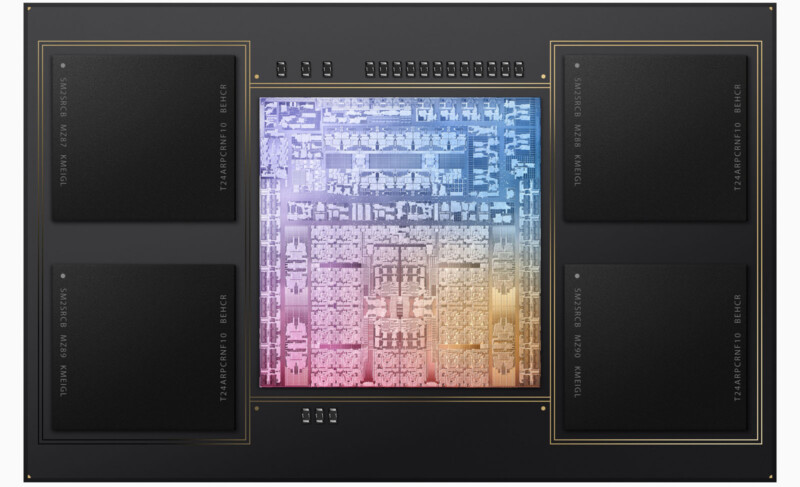Apple Debuts M3 Chips, Company’s First to Use Three-Nanometer Tech
![]()
At tonight’s “Scary Fast” online event, Apple has unveiled its M3 family of chips. Coming less than five months after Apple unveiled its most recent M2 chip, the M2 Ultra, the M3 series has been built using three-nanometer technology, besting the five-nanometer tech of the M2 family.
The M3 series chips, featured in Apple’s updated MacBook Pro models, promise the largest leap forward in graphics architecture ever for Apple silicon, including a breakthrough feature called Dynamic Caching. This means that only the precise amount of graphics memory is used for each app, which Apple says significantly increases performance for the most demanding applications.
![]()
“It features Dynamic Caching that, unlike traditional GPUs, allocates the use of local memory in hardware in real time. With Dynamic Caching, only the exact amount of memory needed is used for each task. This is an industry first, transparent to developers, and the cornerstone of the new GPU architecture. It dramatically increases the average utilization of the GPU, which significantly increases performance for the most demanding pro apps and games,” Apple says.
The M3 chips also introduce some new features, like Mesh Shading and hardware-accelerated ray tracing to the Mac for the first time. Ray-traced graphics are on the cutting-edge of gaming, so it will be fascinating to see if the M3’s graphical prowess will finally see the Mac become a serious option for enthusiastic gamers.
![]()
As for CPU cores, the performance cores are up to 30% faster than the M1 and 15% faster than the M2. Efficiency is up to 50% faster than the M1 and 30% faster than the M2. Apple says its new chips maintain the company’s industry-leading “performance per watt” claim. The company also has not hesitated to tout its performance relative to leading Windows computers, claiming that the M3 delivers the same graphics performance with a quarter of the power.
“Apple silicon has completely redefined the Mac experience. Every aspect of its architecture is designed for performance and power efficiency,” explains Johny Srouji, Apple’s senior vice president of Hardware Technologies. “With 3-nanometer technology, a next-generation GPU architecture, a higher-performance CPU, faster Neural Engine, and support for even more unified memory, M3, M3 Pro, and M3 Max are the most advanced chips ever built for a personal computer.”
![]()
Apple M3
As for the base M3, Apple has kept the number of cores the same. Like the base M2, the bottom-tier M3 still sports eight CPU cores, split into four high-performance and four energy-efficient cores, and 10 GPU cores.

M3 features 25 billion transistors, five billion more than M2. Compared to the M1, the M3’s 10-core GPU is 65% faster in terms of graphics performance. The M3’s 8-core CPU is up to 35% faster than the M1.
![]()
However, that is not to say there’s nothing interesting with the base M3 chip. The move from five-nanometer to three-nanometer technology promises improved energy efficiency, reducing operating costs for a desktop like the iMac and better battery life for notebooks. The M3 has up to 24GB of integrated memory.
Apple M3 Pro
That said, looking instead at the M3 Pro shows that Apple is not withholding performance gains with its M3 family of chips. For example, the M3 Pro shows more notable gains, starting with a lot of transistors — 37 billion of them, in fact.

Apple has upped the CPU count from 10 or 12 (six or eight high-performance and four energy-efficient cores) to 12 or 14 (six or eight high-performance and six energy-efficient) cores. The resulting performance gains compared to M1 Pro are an impressive 30%. That is a sizable improvement in just a couple of years, and outpaces the sorts of gains that were seen over similar time spans before Apple’s move to Apple Silicon.
![]()
As for the GPU, the Pro Max offers 16 or 19 GPU cores, depending on the configuration, which is a two and one-core improvement, respectively. Graphics performance on the M3 Pro is up to 40% faster than the M1 Pro.
The M3 Pro supports up to 36GB of RAM.
Apple M3 Max
The M3 Max continues this same trend, upping the CPU and GPU core count across the board compared to the M2 Max. The M3 Max goes from 12 CPU cores, including eight high-performance and four energy-efficient cores, to 16 CPU cores, upping the high-performance core count from eight to a dozen.

The M3 Max with 16 CPU cores is 80% faster than the M1 Max, which is an even more impressive gain than seen on the M3 Pro.
![]()
The GPU core count increases from 30 or 38 to 32 or 40. The M3 Max supports up to 128GB of integrated memory. The M3 Max also includes two ProRes engines, which will significantly help video editors, especially those working with very high-resolution content.
![]()
Image credits: Apple